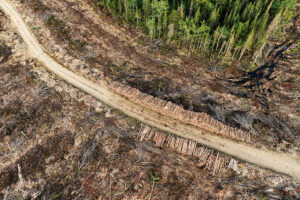With increasing public awareness of the microbiome—and the symbiotic nature of the bacteria it includes—I’ve noticed a growing sentiment against taking antibiotics.
In my distant healing practice giving Diamond and Gemstone Therapy sessions, I’ve had the opportunity to work with clients with a wide variety of issues and concerns, including those involving antibiotics. Some clients have come to me with the intention to restore their microbiome after receiving antibiotic treatment. Their intention is heartfelt, but it’s also often riddled with guilt.
 I’ve had my own share of infections that were bad enough to call for antibiotics, and they were also among the many pills I had to take prophylactically after my heart transplant. So I understand the need—as well as the concern.
I’ve had my own share of infections that were bad enough to call for antibiotics, and they were also among the many pills I had to take prophylactically after my heart transplant. So I understand the need—as well as the concern.
Are we doing irreparable damage when we take antibiotics?
In my experience examining, evaluating, and also supporting microbiota populations in my clients, I have not observed that to be the case.
The Effects of Harmful Bacteria Vs. Antibiotics
To understand the different ways harmful bacteria and antibiotics affect the microbiome, it can be helpful to think of the microbiome as a forest.

The effects of harmful bacteria in the microbiome can be compared to clear-cutting a forest. The damage is significant and may not be reparable.
There are two ways to damage a significant portion of a forest: one by clear-cutting and the other by fire.
Fire does not permanently ruin a forest, because it does not destroy the roots or underground fungal network. These will renew the forest, and it will return healthier than before.
But if a forest is cleared for pasture or timber harvesting, the roots can’t regrow and will eventually die. That’s when the cleared portion of the forest loses its life force entirely.
Clear-cutting is similar to what a bacterial infection does to your microbiome—your microbial forest, so to speak. Not only are the symbiotic bacteria destroyed, but the harmful ones take over.

The effects of antibiotics on the microbiome can be compared to those of a forest fire. Damage may be done, but recovery and regrowth can still occur.
If you take an antibiotic to treat an overwhelming population of harmful bacteria, the effect on your microbiome is better compared to that of a forest fire. Some healthy and supportive bacteria may also be killed by the antibiotic, but their underlying roots will remain.
Ultimately, the harmful bacteria have the potential to do more damage to your microbiome than the antibiotic that can treat them.
That’s because once you stop taking the antibiotic, the supportive biota will return. No longer ravaged in battle with the harmful bacteria, they might even come back healthier than before.
Case Study
One of my clients had a certain type of infection and was expected to take antibiotics for the rest of their life. When I worked with them, they had been taking the antibiotics for about three years.
To my surprise and delight, I found that the client’s microbiome had figured out a way to section off the affected area. Furthermore, it had learned to guide the antibiotic medicine to that area and leave it there.
No biota lived in that area or supported the area’s cells. And no harmful bacteria grew there either, thanks to the antibiotic.
Elsewhere in my client’s body, the microbiome thrived. Admittedly, the balance was tentative, and the client often felt less than well. But they’re still alive, happy to be here, and glad to have the assurance that their microbiome didn’t abandon them.
In my work with microbiomes, I’m continually impressed by their diligence, intelligence, and tenacity to fight for the life of their host, who is also their homeland.
How We Make Microbiome Recovery More Difficult
Medical research tells us that after a short-term course of antibiotics, the gut microbiome may take one to two months to return to pre-antibiotic levels. One study found that it took six months to recover from the damage done by antibiotics.
Based on my experience, I think we need to change the way we think about the effects of antibiotics. Assuming they’re harmful and will damage the microbiome will not help it recover.
Instead, once we’ve carefully considered the need for antibiotics and determined our recovery from bacterial infection depends on it, we should support our microbiome rather than fear for its demise.
How I Prepare My Body for Antibiotics
Because of my heart transplant and the meds I have to take to prevent organ rejection, my dentist insists I take antibiotics before certain procedures. So here’s what I do before an appointment: I sit down, close my eyes, and talk to my microbiome with my thoughts. I tell it the antibiotic is coming. Sometimes I move my attention around my body, sharing the news. Other times, I imagine using a megaphone so every one of my microbes can hear.
I suggest they get out of the way of the antibiotic, or perhaps use it as an opportunity to clean house of anything harmful that might be there. Then I surrender to what they know is best.
Several years ago, I was feeling so sick that I was prescribed an antibiotic. Again, I spoke with my microbiota and explained why I was taking it. Surely they already knew about the infection, as they, along with my immune system, were fighting hard against the bacterial invader making me so sick.
When I finally swallowed the antibiotic, my intention was that it would target the harmful bacteria alone. Thankfully, I eventually got past the infection.
In the end, I tell my microbiome how grateful I am to it for sharing this body with me and helping it stay healthy and alive.
I like to think that with a positive attitude, gratitude, and understanding, I’ve solved the antibiotic dilemma for myself. Perhaps this article can help solve it for you, too.

Thank you. This has been a topic I’ve wanted to learn more about.